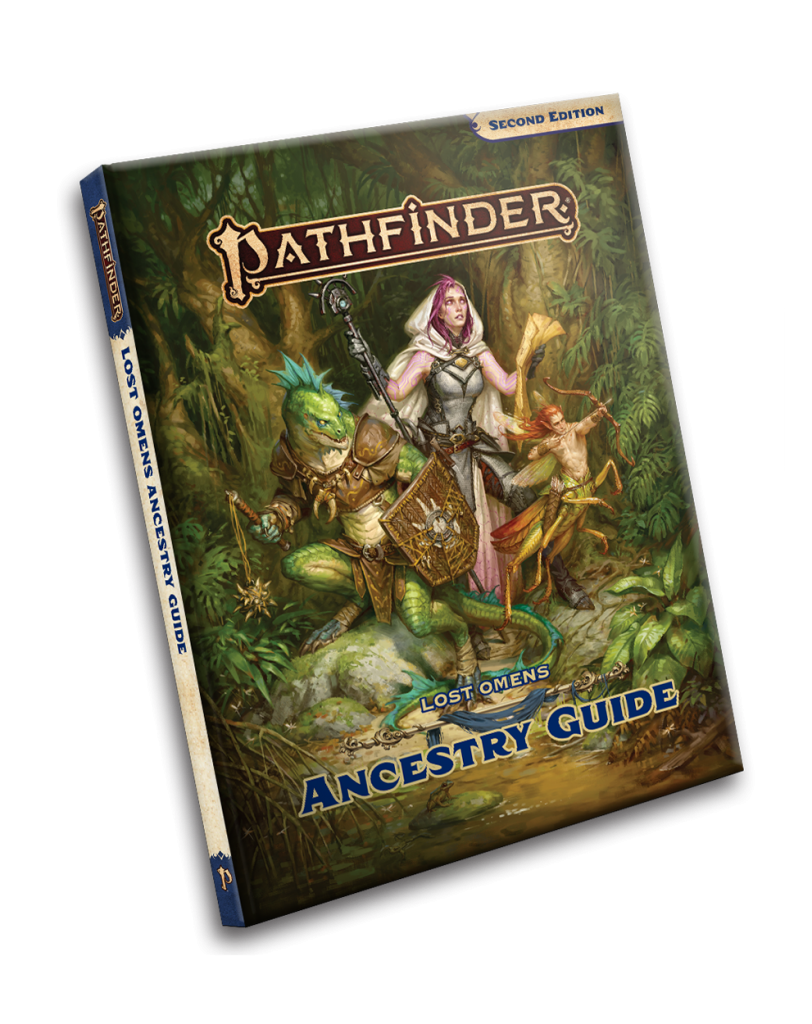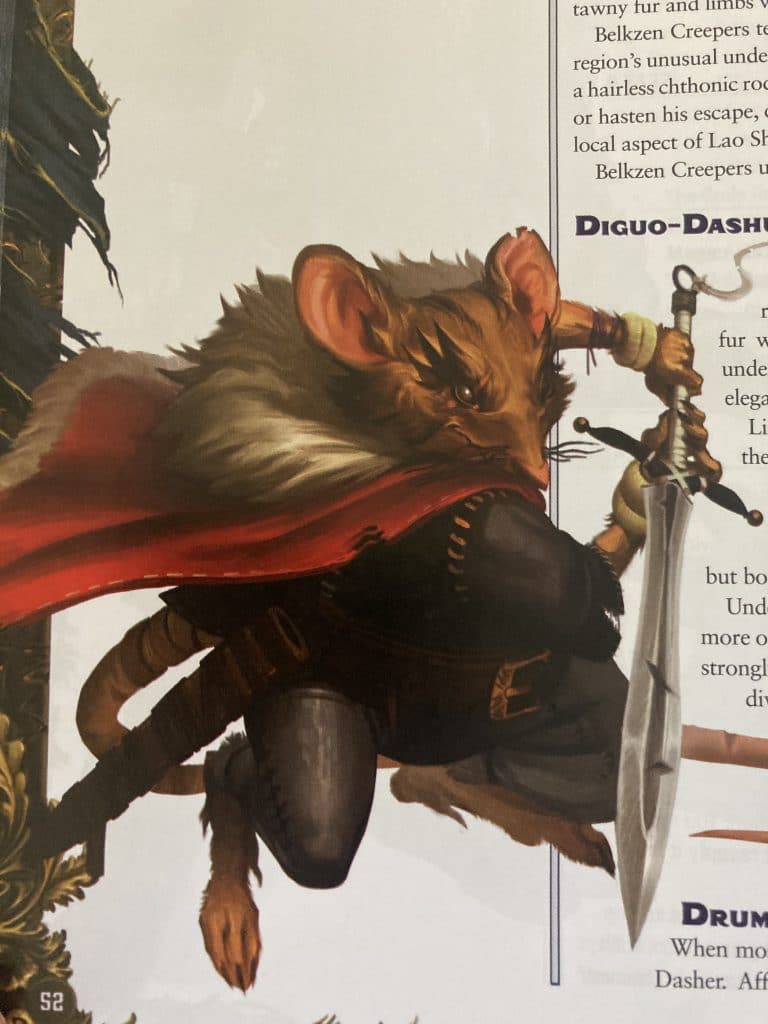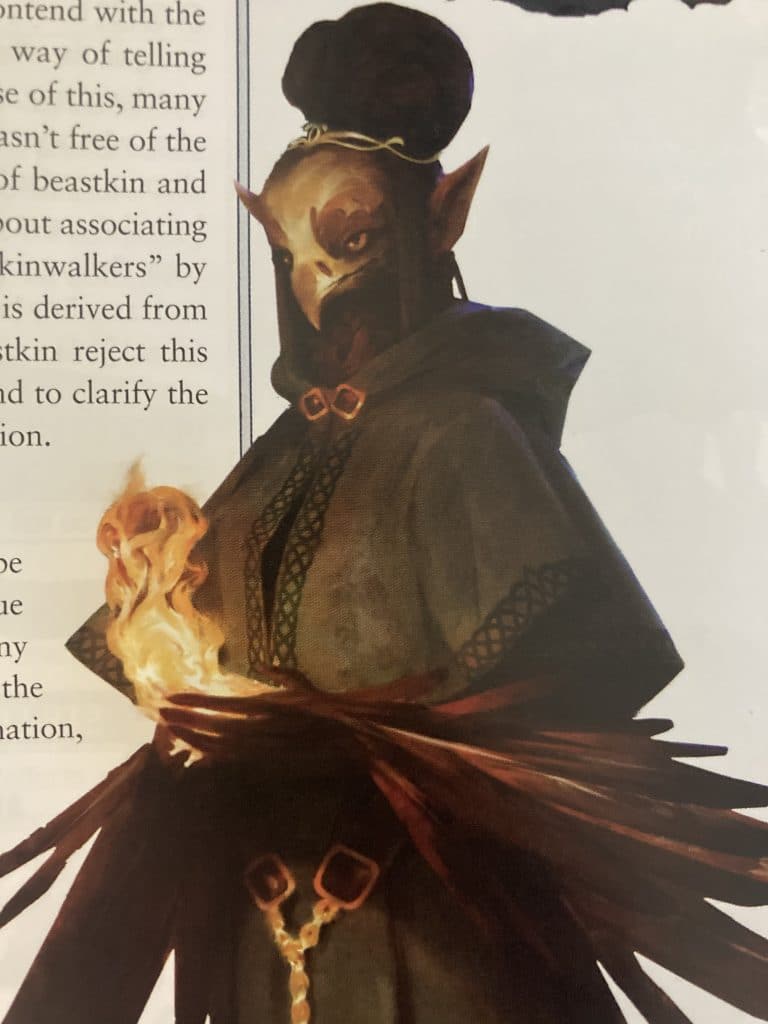The one thing that almost every player can agree on is that more character building options is best! Once again, Paizo delivers with their latest installment of the Lost Omens series Pathfinder Second Edition (PF2), via the Lost Omens Ancestry Guide!
I’m losing track of all the Lost Omens lore-based books that Paizo has released since Second Edition Released. You can read about the Lost Omens World Guide here, the Lost Omens: Character Guide here, the Lost Omens: Gods & Magic book here, Lost Omens: Pathfinder Society Guide here, and Lost Omens: Legends here. I mean, talk about CONTENT!
Up to this point, many of the Lost Omens supplements have been geared toward the Gamemaster. Sure, they all contain some new player options, spells, and gear, but the focus has really been on history and preparation in the form of understanding Golarion as a whole. The Ancestry Guide shifts gears back towards the player, and anybody who creates characters for Second Edition will find immediate value within its pages. Let’s see what it’s all about!
![]() Lost Omens Ancestry Guide: Who It’s For
Lost Omens Ancestry Guide: Who It’s For
The Lost Omens Ancestry Guide is for players first, hands-down. One of the main strengths of Pathfinder First Edition is that the abundance of character options is overwhelming. When Pathfinder Second Edition released, players were hesitant to make the switch because they start back at square one, with a bare minimum of content.
There’s a definite balance between building wide versus building tall. And what I mean by that, is that there’s a big difference between having a hundred Ancestries to choose from, but if they don’t have any additional customization, then what’s the point? The key to a solid base of content is to give players flexibility within the options. Options on options, baby!
Luckily, the Lost Omens Ancestry Guide does just that. The first chapter is all about fleshing out the Expanded Ancestries and Heritages for the options introduced in the Pathfinder Advanced Player’s Guide and the Lost Omens Character Guide. Like I said above, this is important because it offers players the chance to flex their creative muscles and create characters that are more “outside the box”.
However, Paizo didn’t stop there! You’re also getting six new Ancestries that range from Uncommon to Rare, as well as nine new Heritages from the same rarity spectrum. If it’s your dream to play an Undine from the Plane of Water, or to be a technological Android, the Ancestry Guide offers the chance to experience something outside your usual Dwarf or Elf characters.
In short, players will find this as a great supplement to expand their repertoire of characters; I see a new character concept in every paragraph.
![]() Lost Omens Ancestry Guide: The Best Parts
Lost Omens Ancestry Guide: The Best Parts
Now let’s take a look at my top three takeaways from the Lost Omens Ancestry Guide. These are things that caught my eye when reading through the book, and the things I’m most excited to bring to the table.
Beastkin
Tons of tabletop gaming adventures center around the idea of werecreatures, the most common being a werewolf. What if I told you, however, that wolves aren’t the only creatures that can grant extraordinary abilities through a lineage? That’s right!
What I love about the Beastkin entry is that it serves as a blanket player option in terms of creativity. Werehawk? You got it. Werekangaroo? I’m in. Wererabbit? Did somebody say Bunnicula?
Now, there are some interesting ramifications of having an open-ended entry like Beastkin. How do you account for all of the many types of varied beasts in the world if a player wants to build a Beastkin character? Trying to cover all the bases seems impossible. That is, unless you keep things generic like Paizo decided to do.
For example, all Beastkin get the Change Shape ability. In the blurb, it’s noted that you get an unarmed Strike that matches the features of your inherent animal. Bats get fangs, eagles get beaks, etc. Additionally, each of the Beastkin Feats are handled in the same, generic way. They all revolve around shape changing, heightened senses, and the overall ‘pack’ mentality that many Beastkin share.
Perhaps my favorite part of the section comes in the sidebar. It mentions the werecreature’s curse (aka moonlight), and explicitly says that such a curse should be included with caution. Having a curse like this can overshadow other players and slightly derail the campaign in the sense that the curse can upend situations in the blink of an eye. At the same time, Paizo acknowledges that this can also lead to great storytelling. It’s all about balance and expectations.
Tengu and Ratfolk
What’s a game without Ratfolk and Tengu?! These are two of my favorite Ancestries, so I’m glad that they’re back for a second pass in the Ancestry Guide. Ratfolk and Tengu actually share some similar attributes in the sense that they have heritages based on specific terrain.
Ratfolk, for example, can develop thicker coats and bulkier frames if they hail from a colder environment. Or, they might be smaller in size and more maneuverable in tight spaces if they’re from a tunnel-based society. Tengu heritages might grant the ability to literally fly through water, or they might showcase a stronger beak used to crush thick shells of their food supply.
This highlights one of the more important aspects of the Ancestry Guide in general. It sets a good precedent for establishing what the world of Golarion is like. How common are aasimar? Why are many caravan routes established by Ysoki? Paizo gives you the lore behind the Ancestries to help us understand the common societal and relational ties in the world.
Sprites
Finally, we have the Sprites! This is an Ancestry that I’m not normally drawn to, but there are two specific sidebar contributions that made me go, “Huh. This is actually pretty neat!” Sprites, comprised of creatures from the First World (aka fey), are similar to Beastkin in the sense that they offer a ton of creative space for players during character creation.
The first paragraph that caught my attention was the concept of Tiny-sized PCs. In general, Sprites are going to be Tiny, so you have to consider the ramifications of that in a game were size matters. It’s specifically outlined that playing as a Sprite can offer its own set of challenges, especially since Medium and Small are the base sizes for most creatures and characters.
Being Tiny allows you to share the space of other creatures. This includes the potential to actually use a larger creature as Cover! I love that idea of hiding behind the hulking form of your Werebear companion. I’m getting huge Ant-Man and the Wasp vibes.
The other thing that sold me on Sprites was the section titled “Riding PCs”. Queue up shenanigan character creation coordination ala Ratatouille! Gosh, there’s so much fun that can come from that concept. Paizo helps us out by giving us the action economy synopsis of how riding another PC works, so that we can spend less time house-ruling and more time making smashing Italian comfort food.
Ancestry Guide: Parting Thoughts
Overall, the Lost Omens Ancestry Guide is a nice breath of fresh air. You’re still getting some deep lore, which I’ve come to expect and appreciate with the Lost Omens lineup. However, it’s really refreshing to have a book in the line that is more targeted towards players instead of Gamemasters.
So, if you’re looking for MORE CHARACTER OPTIONS – yes, that means you – then what are you waiting for? If you already have the Advanced Players Guide and the Lost Omens Character Guide, this is the next book to add to your library.
You can pick up your copy of the Lost Omens Ancestry Guide directly from Paizo, on Amazon, or better yet, your FLGS.
Discloser: Nerds on Earth was provided a copy of the Lost Omens Ancestry Guide in exchange for an honest review.




